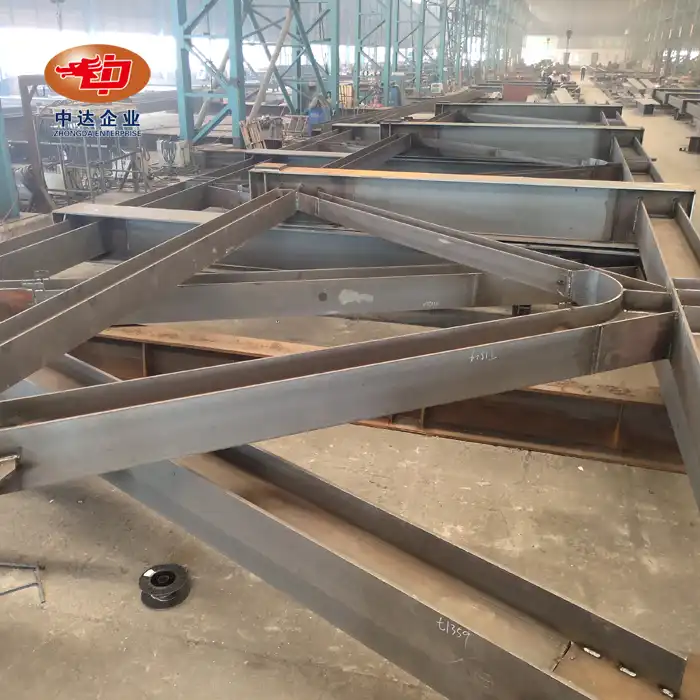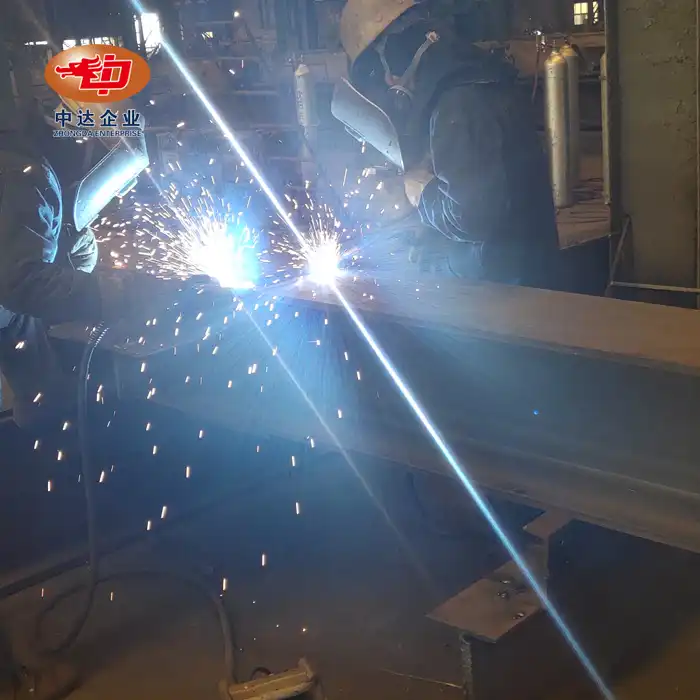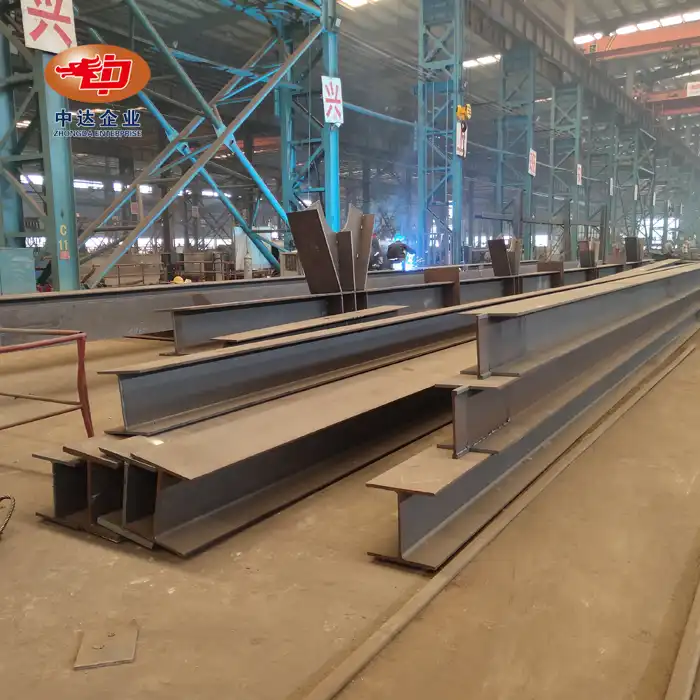
How to Prevent Shrinkage Cracks in Steel-Concrete Composite Beams in Cold Environments?
Preventing shrinkage cracks in steel-concrete composite beams in cold environments requires a multifaceted approach. The key strategies include using low-temperature adaptive materials like S355J2W high-toughness steel, adding anti-freeze agents and air-entraining admixtures to concrete, and optimizing connection designs through finite element simulations to balance thermal contraction differences. Proper material selection, mix design, and thermal stress control are crucial. At Zhongda Steel, we leverage our expertise in -60°C weathering steel technology and BIM-driven prefabrication to deliver composite beam solutions that maintain excellent seismic performance even in extreme cold, as validated by research on steel frame-concrete core tube structures.
Understanding Shrinkage Cracks in Cold Environments
Causes of Shrinkage Cracks in Composite Beams
Shrinkage cracks in steel-concrete composite beams mainly result from the different contraction rates of steel and concrete under low temperatures. As the temperature falls, concrete tends to shrink more than steel, creating uneven internal stresses. Without proper design measures such as reinforcement detailing or joint control, these stresses can accumulate at the interface, eventually causing visible cracks that may affect the structural integrity and durability of the beam.
Impact of Cold Environments on Composite Structures
Cold environments introduce significant risks to composite structures. Repeated freeze-thaw cycles can degrade concrete by causing internal cracking and surface scaling. At the same time, steel may become more brittle, reducing its ability to absorb stress. The slowed hydration process in concrete at low temperatures further weakens early-age strength. Sudden drops in temperature may trigger thermal shock, leading to abrupt structural damage. These factors must be considered to ensure the long-term performance of composite beams in cold climates.
Importance of Crack Prevention in Structural Integrity
Preventing shrinkage cracks is vital for maintaining the structural integrity and longevity of steel-concrete composite beams. Cracks can compromise the composite action between steel and concrete, reducing load-bearing capacity and stiffness. They also provide pathways for moisture and corrosive agents to penetrate, potentially leading to reinforcement corrosion and further deterioration. By addressing crack prevention, engineers can ensure the durability and safety of composite structures in cold climates.
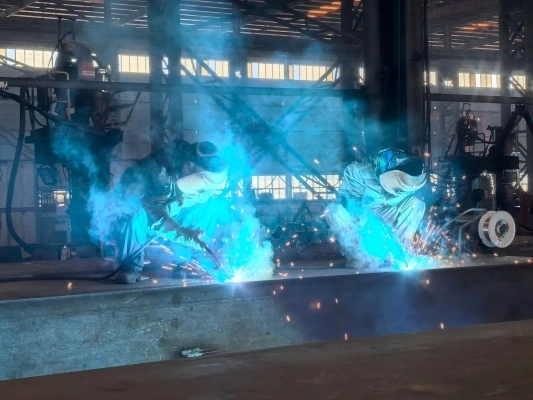
Material Selection and Design Considerations
Choosing Appropriate Steel Grades for Cold Climates
Selecting the right steel grade is crucial for cold-weather performance. High-toughness steels like S355J2W, as used by Zhongda Steel, offer excellent low-temperature ductility and crack resistance. These weathering steels form a protective patina, enhancing corrosion resistance in harsh environments. When choosing steel for composite beams, consider factors such as yield strength, toughness at low temperatures, and weldability to ensure optimal performance in cold conditions.
Concrete Mix Design for Freeze-Thaw Resistance
Optimizing concrete mix design is essential for preventing shrinkage cracks in cold environments. Incorporate air-entraining admixtures to create a network of tiny air bubbles, which provide space for water to expand when freezing, reducing internal pressures. Use low water-cement ratios to minimize shrinkage potential. Adding supplementary cementitious materials like fly ash or silica fume can improve freeze-thaw durability. Fiber reinforcement can also help control crack propagation.
Innovative Composite Beam Configurations
Explore innovative composite beam configurations to enhance cold-weather performance. Consider partially encased steel-concrete composite beams, where concrete is cast between the flanges of steel sections, providing better thermal insulation. Investigate the use of high-performance fiber-reinforced concrete in critical areas to improve crack resistance. Zhongda Steel's expertise in BIM-driven prefabrication allows for precise design and fabrication of these advanced composite systems, optimizing their performance in cold environments.
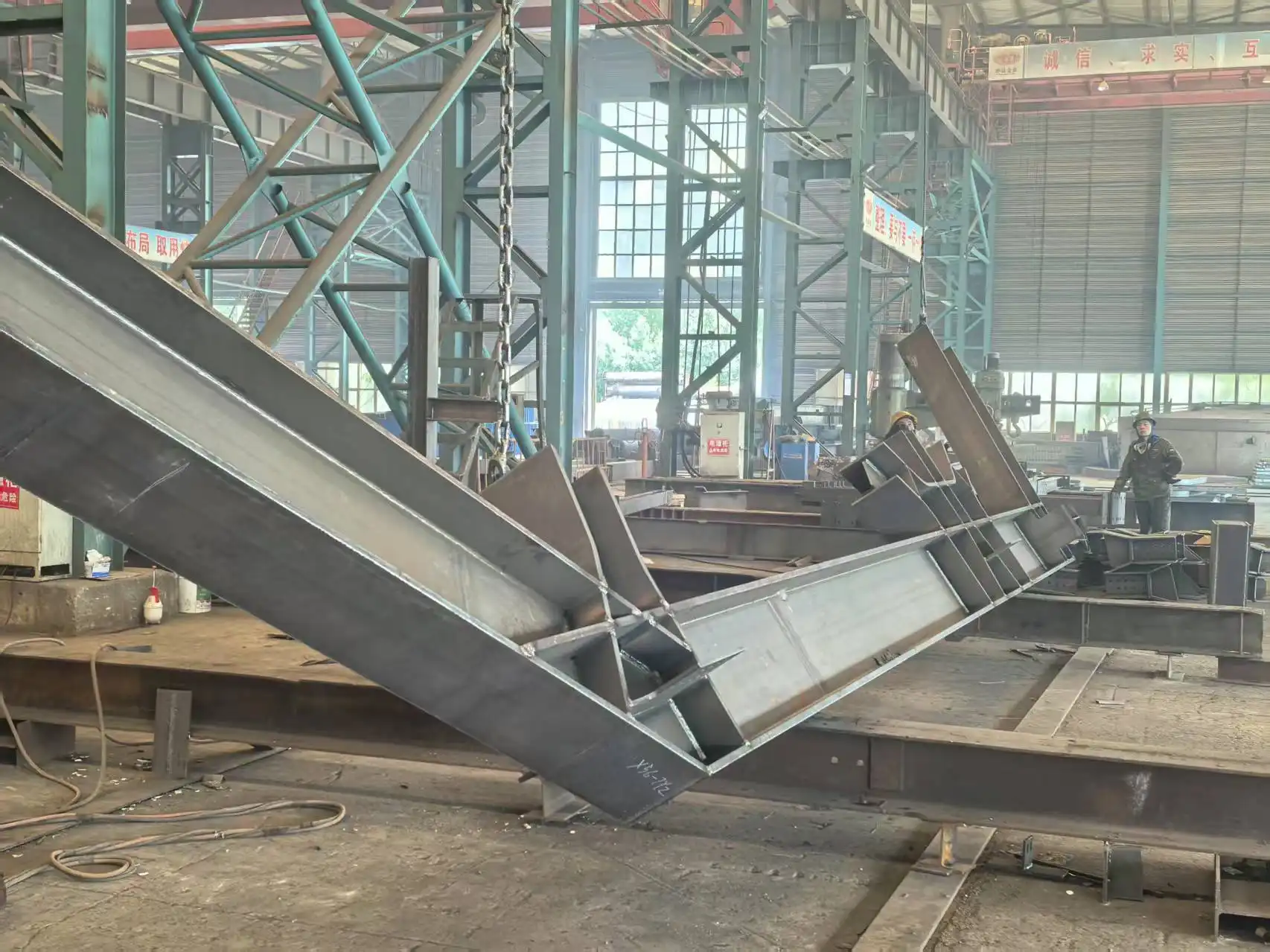
Construction Techniques and Quality Control
Proper Concrete Curing in Cold Weather
Effective concrete curing is crucial in cold environments to prevent early-age cracking. Maintain concrete temperatures above freezing during initial curing, using insulated formwork or heated enclosures if necessary. Extend curing periods to compensate for slower strength development at low temperatures. Monitor concrete temperature regularly and adjust curing methods as needed. Proper curing ensures adequate strength development and reduces the risk of shrinkage cracking.
Connection Design and Thermal Stress Management
Carefully design connections between steel and concrete components to accommodate thermal movements. Use finite element analysis to optimize connection layouts and minimize stress concentrations. Consider flexible connections or expansion joints where appropriate to allow for thermal expansion and contraction. Zhongda Steel's advanced simulation capabilities enable precise connection design, balancing thermal stresses to prevent interface delamination in composite beams.
Quality Assurance and Inspection Protocols
Implement rigorous quality assurance measures throughout the construction process. Conduct regular inspections of steel fabrication, concrete mixing, and steel-concrete composite beam assembly. Use non-destructive testing methods like ultrasonic testing to verify weld quality in steel components. Monitor concrete placement and consolidation to ensure proper bonding with steel elements. Perform post-construction inspections to detect any early signs of cracking or delamination, allowing for timely interventions.
Conclusion
In conclusion, preventing shrinkage cracks in steel-concrete composite beams in cold environments requires a comprehensive approach encompassing material selection, design optimization, and meticulous construction practices. By leveraging advanced materials, innovative designs, and rigorous quality control, engineers can create durable composite structures that withstand the challenges of cold climates. Zhongda Steel's expertise in cold-resistant steel solutions and precision fabrication makes us an ideal partner for tackling these complex engineering challenges.
Contact Us
Ready to enhance your cold-weather seismic-resistant steel-concrete composite Beam performance? Partner with Zhongda Steel for innovative solutions that combine our -60°C weathering steel technology with BIM-driven prefabrication excellence. Our team of experts is committed to delivering composite structures that excel in even the harshest environments. Contact us at Ava@zd-steels.com to discuss your project needs and discover how we can help you build resilient, long-lasting composite structures for cold climates.
References
Johnson, R.P. (2018). Composite Structures of Steel and Concrete: Beams, Slabs, Columns and Frames for Buildings. Wiley-Blackwell.
Nie, J., & Fan, J. (2014). Experimental study on seismic behavior of concrete filled steel tube composite frames. Journal of Constructional Steel Research, 93, 64-75.
Hicks, S.J., & Smith, A.L. (2014). Steel-Concrete Composite Beams for Buildings: Design Guide. Steel Construction Institute.
Kurrer, K.E. (2018). The History of the Theory of Structures: Searching for Equilibrium. Ernst & Sohn.
Narayanan, R., & Beeby, A.W. (2005). Designers' Guide to EN 1994-1-1: Eurocode 4: Design of Composite Steel and Concrete Structures. Thomas Telford.
Oehlers, D.J., & Bradford, M.A. (1995). Composite Steel and Concrete Structural Members: Fundamental Behaviour. Pergamon.










